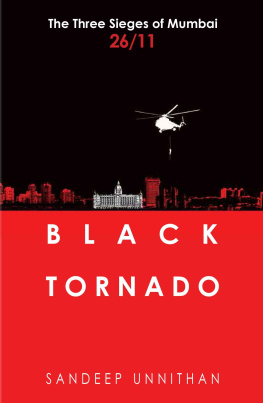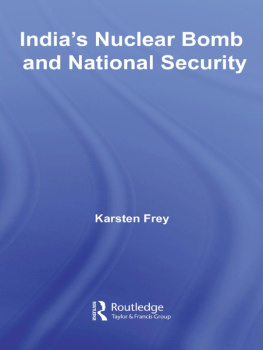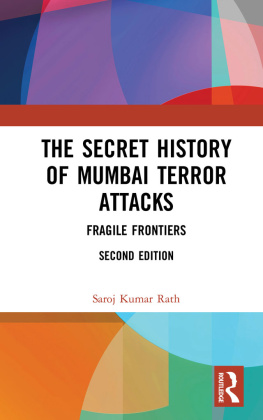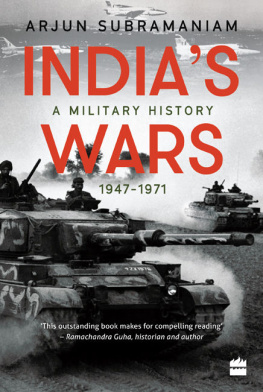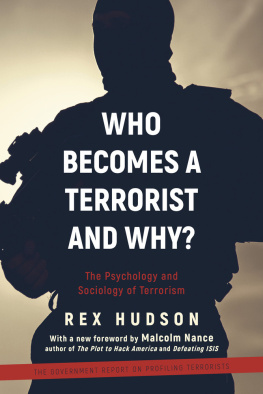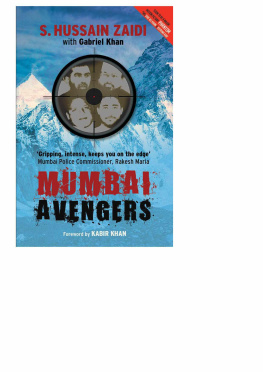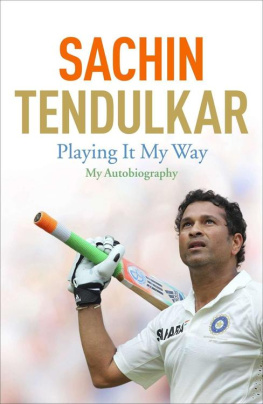Dedicated to the people of my city Mumbai
and all those working to make it safer
Kal Roos ko bikharte dekha tha,
Ab India toot ta dekhenge,
Hum barq-e-jehad ke sholon mein,
America ko jalte dekhenge.
(We saw Russia disintegrate,
Now we will see India fall apart,
In the flames of jehad,
We will see America ablaze)
War cry of the Mujahideen. Urdu slogan in the notebook of a Pakistani terrorist trainee in a terrorist training camp in Rishkhor, Afghanistan. December 2001.
Contents

Six years ago, ten heavily armed terrorists from the Lashkar-e-Toiba (LeT) nearly set India and Pakistan on the brink of war. Using a stealthy, seaborne insertion tactic pioneered by Palestinian terrorists decades ago, the military-style assault on Mumbai achieved its initial objective: complete surprise. It was the worlds first hybrid terrorist attack a deadly witches brew of car bombs and well-trained gunmen swarming across multiple locations to achieve what the military calls the penetration of an adversarys OODA cycle: a sequence of Observe, Orient, Decide and Act.
The two landing sites and the targets two iconic five star hotels, a Jewish centre and a prominent railway station complex had been meticulously recced by an LeT ferret planted in Mumbai. These facts are so well known that they barely need repetition.
The attacks possibly had dual tactical objectives. To extract a video-game-counter like toll of civilian lives and later, to lay prolonged, multiple sieges in Indias commercial capital. The strategic objectives also appeared to be two-fold. To strike at the booming Indian economy and heighten border tensions which could jeopardize Pakistan President Asif Ali Zardaris peace outreach towards India.
The feeble reception that awaited the gunmen in Mumbai was inexplicable. For at least two years prior to the attacks, Indian intelligence agencies issued at least twenty-six alerts warning of possible Fedayeen strikes, seaborne attacks and multi-target raids. Yet this spreading bloom of alerts, did not cause even a murmur and were instead, lazily passed down from the Central intelligence agencies down the bureaucratic chain in the Mumbai police. Hotels on the target list did not even install basic measures like doorframe metal detectors or blast protected doors or even rehearse emergencies.
The Mumbai city police, steeped in its mythology of gangland wars, fumbled at first to identify the unfolding threat. When they had established it to be an overwhelming terror attack, they unaccountably withdrew from all the locations. They lacked the capability to respond.
When the armed forces were called in, it resulted in Indias first counter-terrorist operation involving all three armed forces the first responders, the naval commandos, infantry units of the army that laid cordons around the locations and the air force pilots who flew in the NSG.
This book is named after the operation launched by the National Security Guard, specifically its 51 Special Action Group, to rescue the civilians who were trapped in the three sieges and to neutralize eight terrorists. There has been no detailed analysis or account of this joint but loosely coordinated military action. This book attempts to put the military aspect of this response into perspective through interviews with the marine commandos, personnel from the infantry unit based in the city and the NSGs strike element, the 51 Special Action Group. The narrative is focused on the SAG that handled, in public glare, forty-eight of the sixty hours of the operations.
The Black Cats were to be a repository of specialized counter-terrorist knowledge. Like its symbol, Lord Vishnus 108-edged discus, the Sudarshan Chakra, they were to fly out, dispatch evil and return to base. The discus had, however, turned into a slow bludgeon as early as 2002. SAG commandos took five hours to reach Gandhinagar, the capital of Gujarat on 24 September 2002 after two LeT terrorists massacred 33 visitors to the Swaminarayan temple. Inadequate personal protection gear led to the deaths of two commandos as they moved against the two terrorists later that evening.
As we shall see, various events and processes blunted their edge.

At 11.30 p.m. on Wednesday, 4 March 1975, eight Palestinian terrorists in two inflatable rubber crafts with outboard motors landed on a beach in Tel Aviv. They had set sail from their base in southern Lebanon and intended to capture either the Manshia Youth Club or the Tel Aviv Opera House. They had, however, lost their way. They walked into the four-storey Savoy Hotel located 100 metres away from Jerusalem beach. It was the only building on the street that was brightly lit. The terrorists took ten hostages. They wanted Israel to release twenty Palestinian terrorists held captive by the Israelis, and an aircraft to fly them to Damascus. At 4.20 a.m. next day, Israeli forces stormed the hotel. The terrorists were barricaded on the top floor with all the hostages. In the ensuing firefight, eight hostages lost their lives. Three Israeli soldiers, including the commanding officer Uzi Yairi, were killed. Seven of the terrorists blew themselves up, destroying the top floor of the building. Only one was captured alive.

Mumbai, Indias commercial capital, was one of the most frequently bombed cities in the world in 2008. Between March 1993 and July 2006, the city witnessed a dozen bomb attacks of varying intensity which used improvised explosive devices (IEDs), some fashioned out of sophisticated plastic explosives with timer switches, others pressure cookers modified with locally procured ammonium nitrate. These bomb attacks had killed 516 citizens and injured 1,952. Unlike Kabul and Baghdad, the state was not in the grip of civil war. It was, however, on the front lines of a new and dangerous kind of terrorism: a proxy war against Indias hinterland that had spilled out of Jammu and Kashmir.
The twelve sequential bomb attacks of 12 March1993 accounted for the citys largest body count: 257. The plastic explosives were packed in vehicles parked near the Bombay Stock Exchange; the Air India building; inside a double-decker city bus that passed near the regional passport office; at a petrol pump near the Shiv Sena Bhavan, the cream-coloured, four-storey headquarters of the right-wing political party, at three five-star hotels; a cinema in central Mumbai; and at the Zaveri Bazaar in central Mumbai. Hand grenades were flung at the tarmac of the Sahar International Airport and the fishermens colony in Mahim, suburban Mumbai. Jeeps, cars and scooters were turned into bombs using a shipment of nearly 1.5 tonnes of RDX. The deadly plastic explosive came from Karachi. It was landed using boats on a deserted coastline on the mainland south-east of Mumbai. The shipment, still in cardboard cartons with the marking Wah Nobel (Pvt) Ltd. Wah Cant, was traced to the state-owned public limited company located in the Wah cantonment, 30 km north-west of Rawalpindi, Pakistan. It was clear that the serial bomb plot had not only the blessings but the active collaboration of Pakistans state actors, particularly the army and its Inter-Services Intelligence (ISI).
The blasts came less than two months after the HinduMuslim communal riots in January 1993 that lasted twenty-two days and resulted in 900 killings. The rioting was triggered by the demolition of the Babri Masjid by Hindu fanatics in the state of Uttar Pradesh on 6 December 1992. The 12 March blasts were purported to be revenge attacks by the citys Muslim-dominated underworld, dominated by the Dubai-based Dawood Ibrahim, a fugitive from India since 1983. The offshore don tapped into the hurt caused within his community by the savage riots following the demolition of the Babri Masjid, and used his old gold smuggling routes and underworld network to bring explosives into the city.
Next page
